Your Cart is Empty
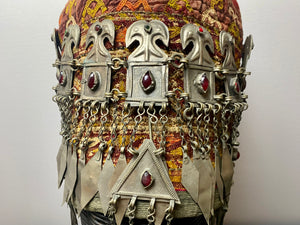
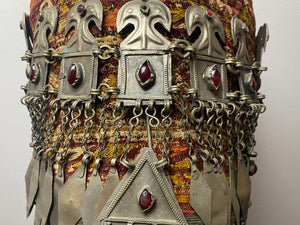
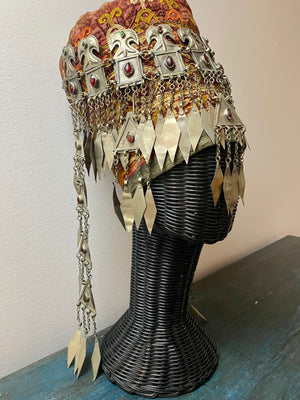
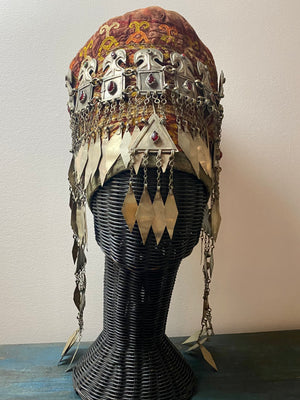
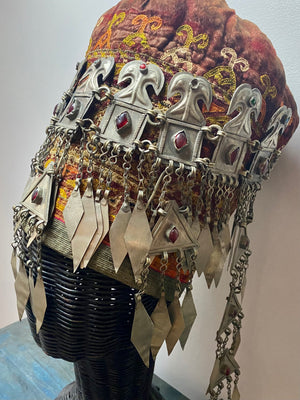
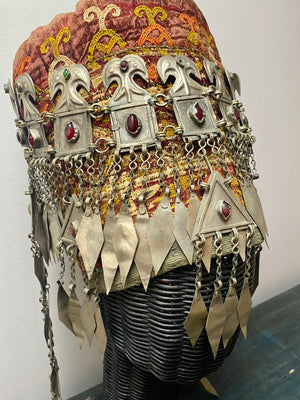
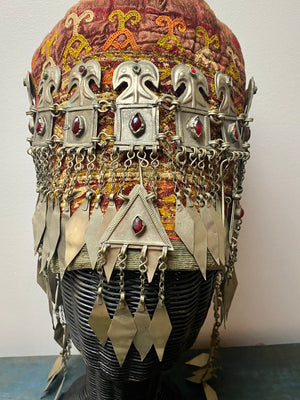
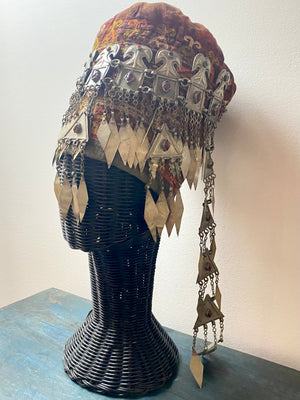
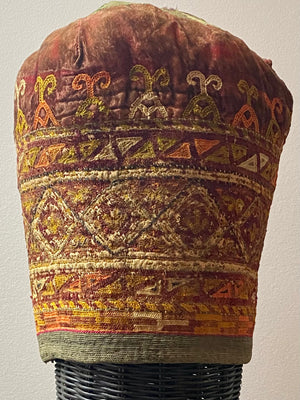
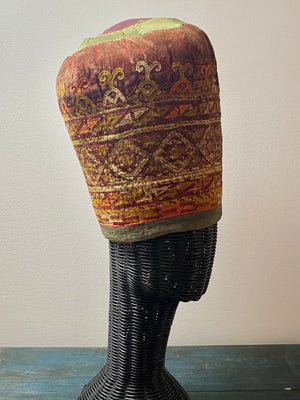
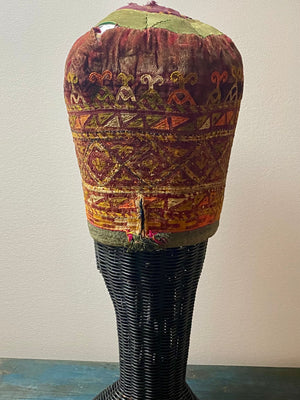
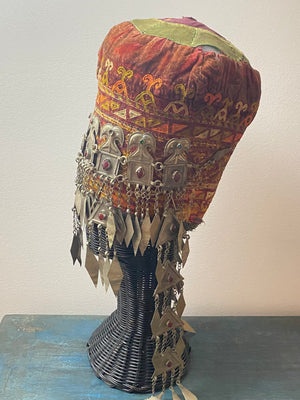
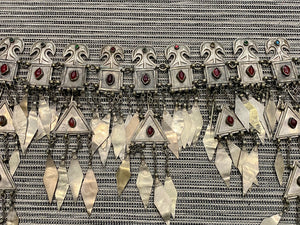
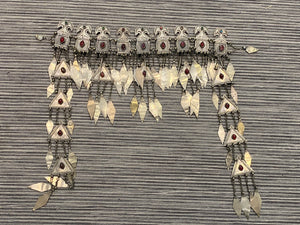
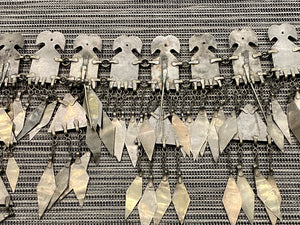
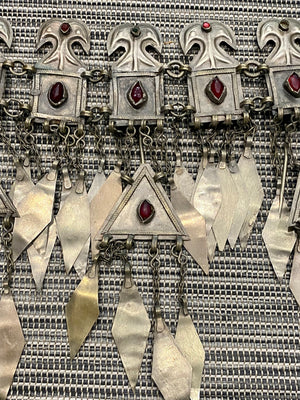
Antique Turkomen Ersari Headdress
$1,280.00
Ersari headdress consisting of two parts, the metal ildirgitch or gaashbaagh tiara and the high, heavily embroidered conical hat into which it was attached. Late 19th century.
The metal elements of the headdress were likely once gilded. They feature the high standing double headed bird motifs across the top, symbolising strength and fertility, and long triangular side panels to frame the face. The stones are red glass, and while old, are unlikely to be original. Large spikes are attached at the back to securely fasten into the conical cap. These appear to have been replaced at some time.
The cap is formed from a solid, multi-layer heavy quilted cotton covered in fine velvet, with a very fine, densely embroidered black cotton border. The top of the hat consists of two worn, lightweight pieces of cloth, the centre being a rose fabric pattern typical to the region. The hat is covered all over with extremely fine and detailed silk thread embroidery.
We believe that this is an heirloom piece, worn at the very least three times, and being slit slightly at the back at some stage to accomodate a larger head, then sewn again for a smaller one.
When a girl married, she exchanged her simple, embroidered gupba hat for a headdress, showing her status as a married woman to the world. Headdresses could reach heights of 30 or 40 cm and had a tapering, cylindrical shape. The headdress would contain a stiff core of felt, leather or even light wood to help maintain its upright shape. After the birth of her first child, a woman passed from the status of bride to that of wife, and as she grew older, the headdress became smaller and simpler.
The style and shape of this particular headdress help to date it. This ornate style of metalwork is called an ildirgitch, a piece containing a large number of metalic elements that framed the face. This style grew in popularity in the late 19th century with heights of 20-30 cm, reaching its greatest height of 40 cm in the first two decades of the 20th century. Therefore this piece most likely dates from between 1870-1890.
Wear is commensurate with age and use. There are holes in the top where the fabric was pinned to a veil.
Measurements:
Cap: diameter 16 cm, circumference at base 56 cm, circumference at top 64 cm, height 23 cm.
Ildirgitch tiara: width from hook to hook 53 cm, height of the top band 7 cm, height of side dangles 44 cm
















